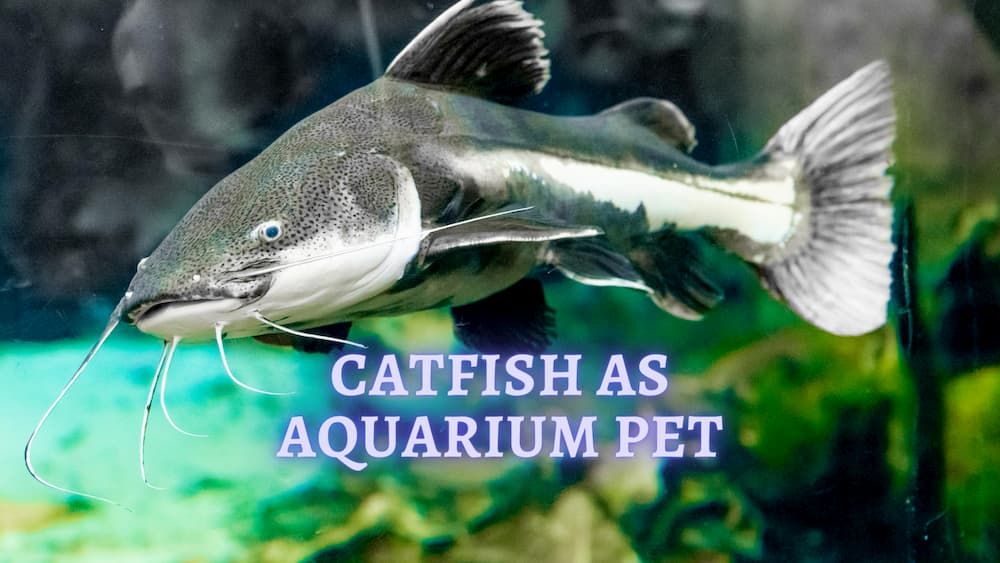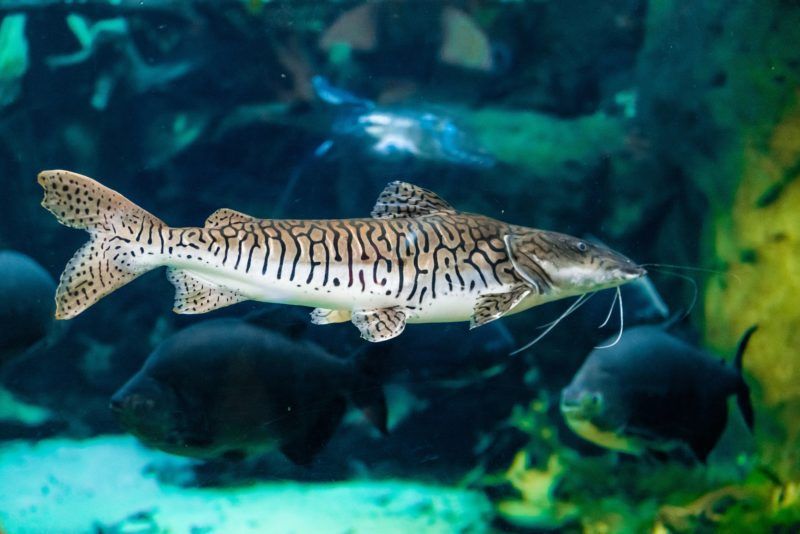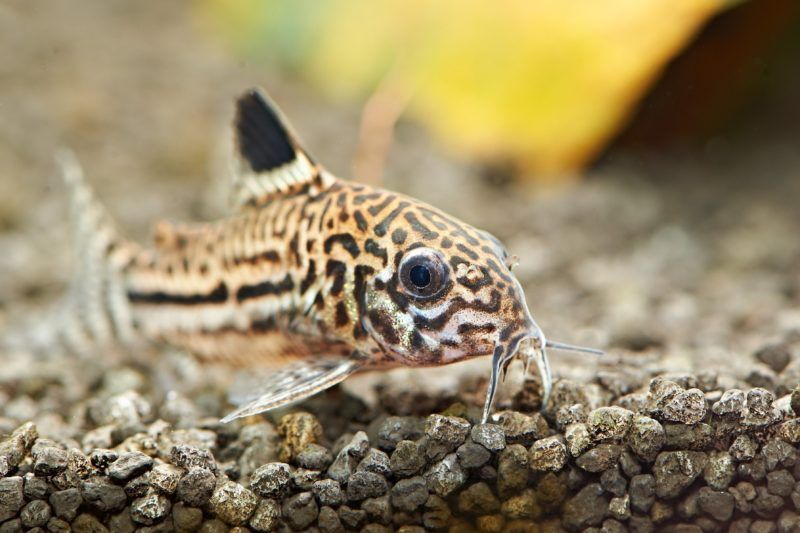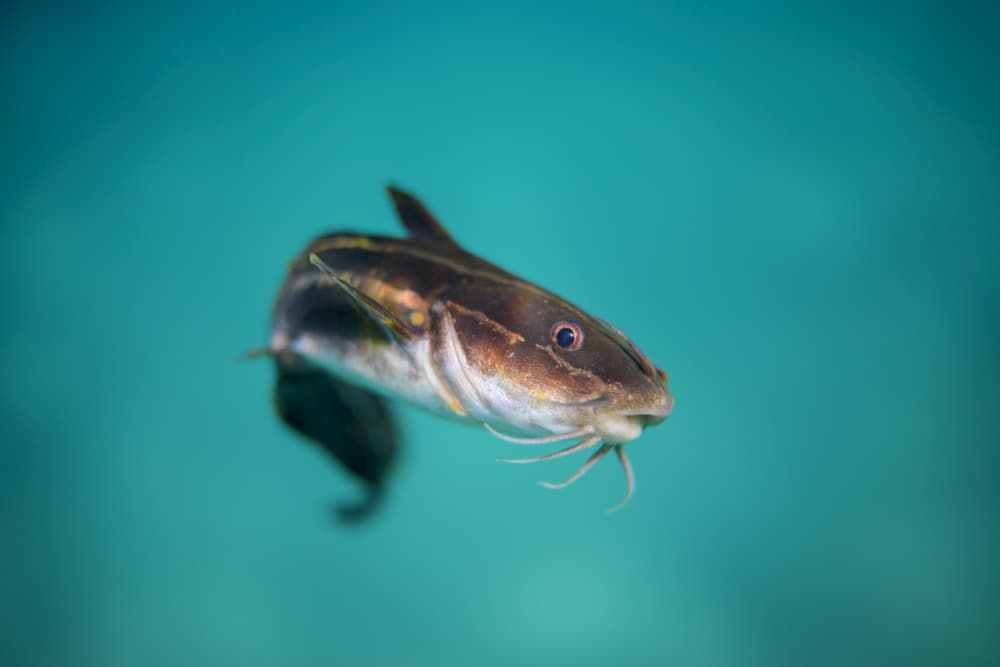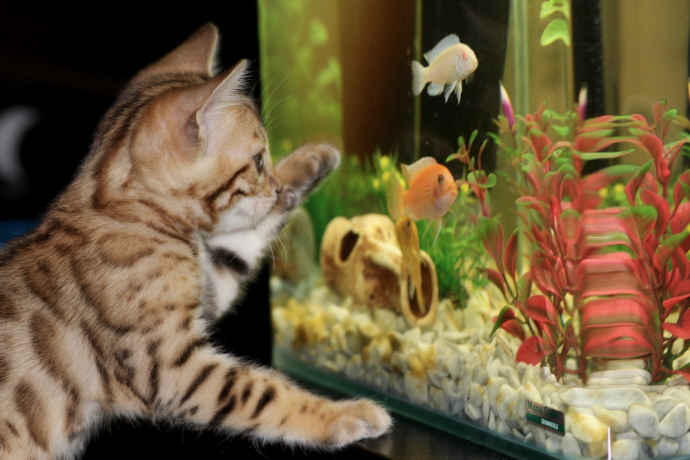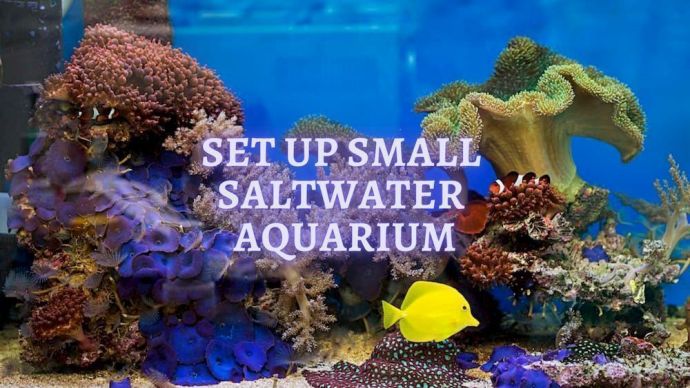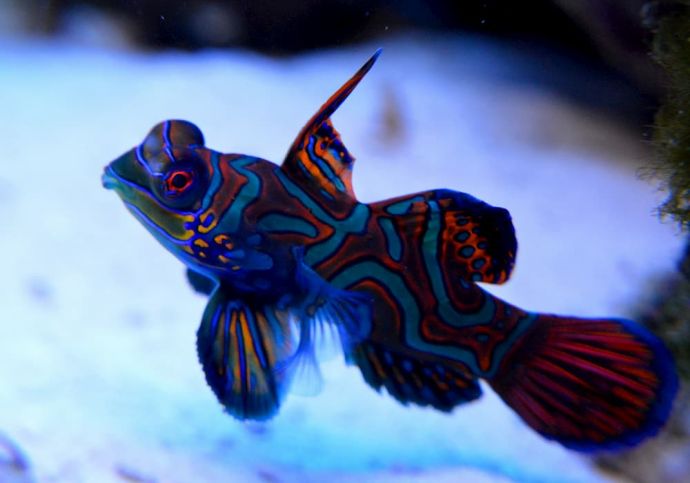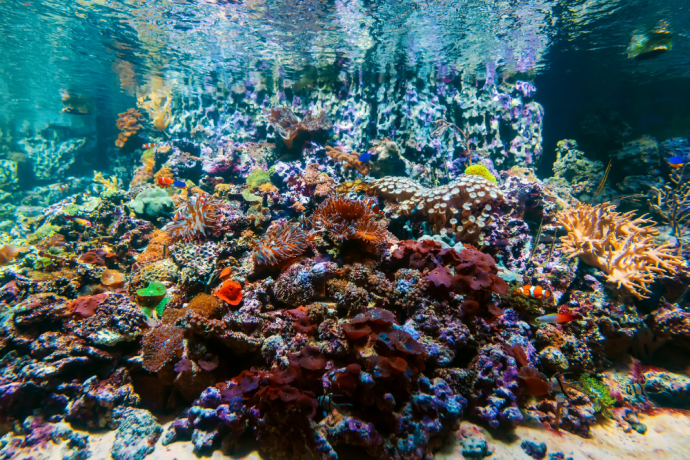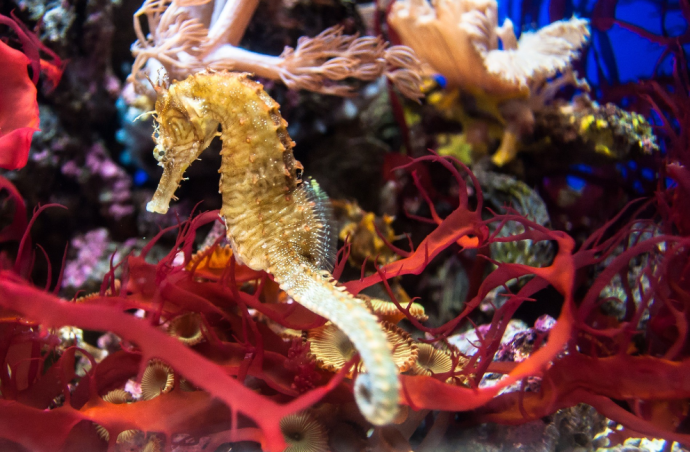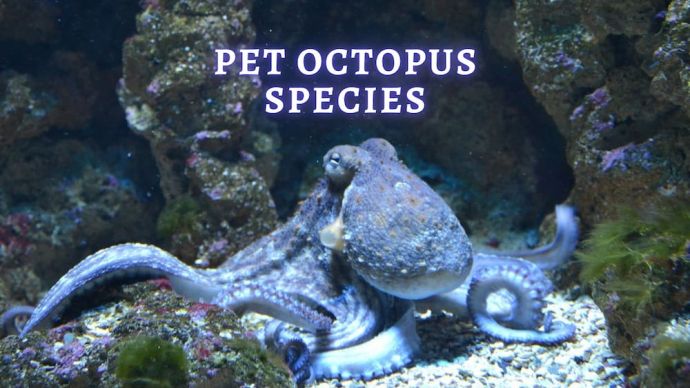Pet Catfish: Can you have a Catfish as a Pet?
Written by:
Author: Vicki Smirnova
Vicki Smirnova is a professional writer and editor who adores animals and helps readers get along well with their pets. She has been working in digital media for more than 5 years and has great experience writing content about lifestyle, including pets. Vicki specializes in dog health and nutrition, cat feeding, dog training. She is an aquarium lover and is passionate to write about fish care at home. Also, Vicki headed several websites and worked as a news editor.
View all 244 articlesLearn about our editorial process and veterinary review board.
Viewed: 6193
Updated on: 03/13/2023
The short answer is yes, you can keep catfish as pets, and they actually make exciting fish for home aquariums. There is a wide range of species, sizes, and colors available, meaning that you can often find the perfect catfish to complement your existing setup. This underwater inhabitants can be kept within a tank of their own, or they can be incorporated into a shared tank where they can prove to be very useful, cleaning the food and detritus that falls to the bottom of the aquarium. If you are wondering about the ins and outs of keeping catfish as pets, we have created this handy guide to ensure that you have all the information you need.
Catfish Facts
Interesting facts about catfish:
- Catfish are considered the largest river predator. The maximum weight in the wild can be up to 500 pounds.
- Catfish are nocturnal predators. At night, they like to swim near the thickets in search of prey.
- Catfish are very smart and cunning. To attract prey, they move their mustache, thus imitating worms, and keep their mouth open.
- Female ancistrus, in the absence of a male in the pond, can change sex.
- Catfish are stay-at-home fish. All their lives are spent in one pit, which they “arrange” for themselves.
Characteristics
Catfish can be found on all continents (with the exception of Antarctica). They inhabit most freshwater rivers, successfully adapting to life in a wide variety of conditions.
This underwater inhabitants are considered the most hardy and unpretentious fish species, which makes them excellent candidates for home aquariums: they eat almost everything, are peaceful and not demanding of the conditions of their surroundings. The only significant disadvantage is that many catfish sometimes get too large.
A distinctive feature of these inhabitants is the absence of scales, which are often replaced by bone plates or thick skin that secretes mucus in large quantities. Because of this cover, the fish are usually clumsy and sedentary.
Another feature is the presence of antennae – from two to four pairs – which are located on both sides of the mouth. Depending on the species, the antennae can be branched or transformed into lips.[2]
Catfish Types
Certain catfish species are better suited to aquarium life for a number of reasons, whether that be the conditions within the water or how easy they are to look after. We have compiled the ten best зуе options for your next tank purchase:
1. Bristlenose Pleco
The Bristlenose Pleco is a rare catfish of the Amazon. This fish is considered exclusive and can become real jewelry of your aquarium. It is important not to confuse it with other types. Its natural habitat is South America, the Amazon River. The body of this fish is black and covered with tiny stars. It does not pose a threat to neighbors of similar size and temperament. It gets along well with non-aggressive neighbors of the appropriate size: barbuses, ternetii, scalarii.
2. Gold Nugget Pleco
The Gold Nugget Pleco is a very beautiful aquarium fish, of which there are several different types. Habitat: South America, the Amazon River in Brazil and Venezuela. They get along well with most other fish species, except other Pleco. They are omnivorous but mostly eat algae formed on rocks and driftwood. These fish can also be fed with seaweed flakes and speciality food.
3. Corydoras Catfish
The Corydoras is one of the most popular aquarium tropical fish, with goldfish and representatives of the viviparous species. They originate in homeland-freshwater reservoirs of the south-east of South America-the basin of the estuary of La Plata. The word Corydoras is derived from the two Greek words, Corys and Doras. The first means “helmet,” the second is often translated as “skin.” However, a more accurate meaning is a protective cover or armor.
4. Upside Down Catfish
In nature, this fish is found in Africa, in the Congo River basin. Its main feature is that it always swims up with its belly. The reasons for this behavior are still not known. This fish has a slightly flattened body on the sides, covered with strong and slimy skin. For neighbors, you should choose aquarium fish of the same size and temperament.
5. Glass Catfish
Glass catfish – an unusual aquarium fish. A distinctive feature of this species is the complete absence of pigmentation, which makes the body of the fish transparent: you can see its internal organs and even the background in the aquarium. Glass catfish are sensitive to the level of nitrates, so you can only launch fish in an aquarium with an established biological balance. It is also necessary to take into account that this is a timid fish, which must be kept in flocks and exclusively with peaceful neighbors.
6. Pictus Catfish
The Pictus is a suitable addition to many freshwater aquariums. The nocturnal nature of this inhabitant requires dim lighting or places to hide during the day. They can grow up to 5 to 6 inches. The Pictus a found in South America, in the Amazon and Orinoco rivers and can live with other peaceful nocturnal fish.
7. Otocinclus Catfish
Otocinclus lives in slow-flowing rivers, lakes and ponds overgrown with vegetation in Southeastern Brazil. It is the smallest member of the family. The fish has an elongated body, flattened from top to bottom in the belly and chest areas. Otocinclus is a peaceful and slightly timid fish. It must be kept in a group of at least 5. Neighbors should be non-aggressive and small in size. It is advisable to take into account the fact that otocincluses clean the aquarium and therefore it is undesirable to keep them with algae-eating fish.
8. Clown Plecostomus
This underwater inhabitants comes from Venezuela and Colombia, where it lives in the Orinoco River. They are usually found near riverbanks amid a tangle of driftwood and plants, where their dark colors help them disguise themselves. Despite their small size, they need an aquarium of at least 20 gallons, due to the fact that they feed on wood and form a large amount of waste, which can quickly spoil a small tank.
9. Bumblebee Catfish
Its natural habitats are the rivers of Thailand, Laos, Cambodia and Vietnam. It lives in slow-flowing waters among submerged trees and their roots. It keeps close to shelters during the day, and at night it goes out in search of food. Adults reach a length of about 5 inches. The main color is dark brown with several vertical and diagonal stripes of yellowish color. The optimal aquarium size for a single catfish starts at 25 gallons.
10. Whiptail Catfish
This underwater inhabitants lives in Mexico and Venezuela. The fish prefers clean, clear water, rich in oxygen. It is found in rivers with strong currents and sandy soil. During the day, it hides among plants or in shelters. At the same time, it sometimes jumps out of the water. Active at dusk and at night, it feeds on small aquatic organisms and algae.
What are the best species of Catfish for shared tanks?
Some species of catfish are better suited to sharing an aquarium with different fish than others. If you already own a tank with a number of fish or are keen to create a mixed aquarium, it is important that you invest in a catfish that plays well with others. Here are the best four species for shared tanks:
1. Zebra Pleco
This fish is shy and can be intimidated by overly active fish. But this species is considered one of the most beautiful. Adults reach a length of about 3 inches. The body pattern consists of contrasting black and white stripes, reminiscent of the color of a zebra.
2. Corydoras Catfish
Corydoras are gregarious fish, so it is advisable to have them in an aquarium for 4-6 fish. They are great for living with other species in a shared aquarium. These peaceful fish swim mainly in the bottom layers of the water. A distinctive feature of this variety of catfish is the presence of six antennae, arranged in pairs.
3. Bristlenose Pleco
These fish do not pose a threat to neighbors of similar size and temperament. They get along well with non-aggressive neighbors of the correct size. The aquarium for this fish should have vegetation and places where the fish can rest.
4. Clown Plecostomus
Individual specimens found in nature can reach 20 inches, although the usual length does not exceed 11 inches in aquariums. Young plecostomus-fish are quite peaceful. They can safely be kept with their own kind, as well as with other species in a common aquarium. [1]
How to Take Care of Aquarium Catfish
Most catfish live in flocks. In the aquarium, they must live with five or six fish. For such a company, a capacity of 15-20 gallons is suitable. The optimum temperature for catfish in the aquarium is about 70 °F. Catfish are suitable for water acidity 6-7. 4. Water hardness-1-17. The aquarium should have aeration and filtration. It is also necessary to partially replace the water once a week.
What do Catfish eat?
Catfish tend to prefer sinking pellets or massive flake foods when kept within an aquarium. Catfish are benthic creatures, meaning that they live at the bottom of the tank or the ocean’s floor in the wild. They live on the substrate and sift through it to find a source of food. This means that any tank food that floats on the surface of the water is unlikely to be received by the catfish, potentially causing them to go hungry. Instead, you should opt for food that sinks, allowing them to eat whatever is dropped or left behind by the fish higher up in the tank.
Most catfish species are nocturnal and prefer to be fed at night when the lights on the tank are turned off. In terms of creature feed, catfish often enjoy brine shrimp, Mysis shrimp, and blood worms, either live or frozen. However, if you opt for frozen food, then ensure it is thawed before adding it to the tank. Other feeding preferences depend on the species of catfish.
How long do Catfish can live in a Fish Tank?
Within an aquarium environment and if looked after correctly, catfish can live for between seven and 15 years. In this time, some species can grow up to one foot in length, with the majority of catfish preferring to live in groups of three or more. If you invest in larger catfish, it is best to pair them with similar size fish as they tend to eat smaller species.
READ MORE: Small Aquarium Fish
Common Health Issues
Aquarium catfish, like other fish, are not immune from various diseases. Diseases can occur due to catfish’s poor content that can appear in the aquarium from other fish, live food, plants and snails.
In the first case, you can try to fix everything with more frequent water changes and to improve the conditions of detention; in the second case, you need medicine. After diagnosing the fish and prescribing treatment, do not rush to pour the drugs into the aquarium. The thing is that aquarium catfish do not tolerate treatment with salt and preparations containing copper.
Often, beginners are afraid of a temporary change in the color of catfish (paling or light spots). This is not a disease but a reaction to stress. Catfish either just turn pale or disguise themselves under the color of the ground. After a certain time, when the fish calms down, the original color will be restored.
Otherwise, the treatment of aquarium catfish is carried out in the same way as in other fish. If you keep them in spacious aquariums, with live plants, good aeration and filtration, as well as weekly water changes by 15-20% of the volume, then catfish will be much less sick.
How do I know if my Catfish is healthy or unhealthy?
The signs of healthy catfish are clear and easy to look for. A fit and healthy fish will have clear eyes, eat vigorously, and continue swimming along the bottom of the tank. When it comes to an unhealthy or distressed catfish, there are a few signs to look out for. Loss of color, loss of appetite, spots, fungus, cloudy eyes, bloating, loss of weight, erratic swimming, and labored breathing are warning signs in an unhealthy catfish.
Habitat Maintenance
It is better to place an aquarium with catfish in the quietest room of the house. Catfish are pretty shy and unnecessary noises make them nervous. Loud music or slamming doors can negatively affect their well-being. You can not put the aquarium where it is too light – these fish prefer darkness. An aquarium that is viewed through and through is not suitable; the back wall must necessarily be turned to the wall or decorated.
How do you cater a tank towards a Catfish?
While small catfish can live in 5 — 10 gallon (37.85 l) tanks, larger species will need at least a 30-gallon aquarium to thrive. You should also look to keep the tank away from direct sunlight or drafts. As mentioned before, catfish are substrate fish, meaning that they spend most of their time on the base of the tank and only eat food that travels down that far. You should look to layer the bottom of your tank without around three inches of gravel to allow the catfish to search for food. Catfish require a water temperature of between 74 and 78 degrees Fahrenheit (25.56 °C) and prefer to bed fed at night when the tank light has been switched off.
Once you purchase your catfish, bring them home and place them in the tank while still in their bag. This allows them to get used to the water temperature and the environment. Leave them in the bag for 15 minutes, then use a net to transfer them into the main tank water, leaving the old bag water behind if possible. Only add a maximum of three catfish to the tank at one time and check the chemical balance as you go, because new fish tend to change the levels.[3]
What to put in a Catfish’s Aquarium?
The aquarium should be as convenient as possible; it is better to place aquarium equipment outside the aquarium. If the equipment is located inside, catfish can move it.
The filter must be selected based on the type of catfish. Many catfish require a strong current; for example, ancistrus, so the speed of water passing through the filter in aquariums with such fish is much higher than in conventional aquariums. The filter should be powerful also, because many types of catfish constantly dig in the ground and raise dirt from the bottom. A weak filter will not have time to perform mechanical cleaning at the proper level, and the water will be cloudy.
1. Tank Decor
The aquarium should have many plants and shelters. Hollow coconut shells, grottos, caves, snag, and stumps are suitable. Snag will serve as a source of food for catfish. They need cellulose, so they will be gnawing on the snag. Catfish like to dig in the ground in search of food. For bottom inhabitants, sand or fine rounded soil is preferred. The soil should not damage their skin. Do not overdo it with the underwater flora – there should be enough space on the ground so that all the catfish of the aquarium have the opportunity to lie down on the bottom.
2. Heaters
Most aquariums require some form of a heater to maintain a consistent temperature for the fish housed within. When it comes to catfish, they prefer temperatures of between 74 and 78 degrees Fahrenheit (25.56 °C). To reach these levels, you will want to invest in an aquarium heater with sufficient power. Generally, you want to look for a heater with five watts of power for every gallon within your tank. For example, a ten-gallon tank heater should have 50 watts of power, or a 30-gallon tank heater should have 150 watts of power. Larger aquariums may need a heater at each end to keep a consistent temperature across the entirety of the water.
3. Lights
Catfish require dim lighting. Most catfish are active in the dark period of the day and do not like the sudden inclusion of light. Therefore, it is better if the lighting increases and decreases gradually, simulating the day’s natural cycle. It is recommended to purchase an auto-timer to turn the light on and off.
READ MORE: Best Freshwater Aquarium Fish Combination
FAQ
Are Catfish good for Aquariums?
Most catfish are calm and peaceful. They easily get along with most types of ornamental fish, so they can easily be kept in common aquariums.
Are Catfish Saltwater or Freshwater?
Catfish are freshwater inhabitants and can be found on all continents (except Antarctica). They inhabit most freshwater reservoirs and river systems, successfully adapting to life in a wide variety of conditions.
Do Catfish eat other Fish in the Tank?
Catfish can eat other fish in the aquarium if they do not have enough space or little food. You can not keep catfish in the same aquarium with goldfish and some cichlids. Catfish can be hooked to guppies, scalars, barbuses, tetras, neons and rainbows.
Article Sources:
- Animal-World. “Catfish.” Animal World, animal-world.com/encyclo/fresh/catfish/catfish.htm.
- Wong, Kate. “How Nocturnal Catfish Stalk Their Prey.” Scientific American, 6 June 2001, scientificamerican.com/article/how-nocturnal-catfish-sta/.
- “Alternative life-history strategies of catfishes” Bruton, Michael N. (1996). cambridge.org/core/journals/aquatic-living-resources/article/abs/alternative-lifehistory-strategies-of-catfishes/D8FEDFD14CC143C49E5F6CBAE1056CFB#.









